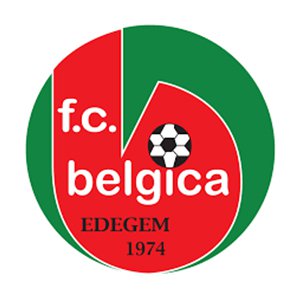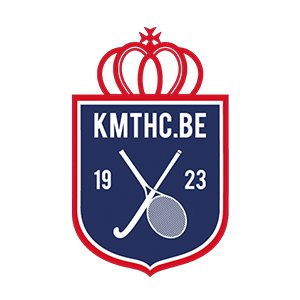<h1>FAQ</h1>
<h2>What is LED?</h2>
<p>LED is the common abbreviation for a light-emitting diode. Each individual LED consists of a semiconductor diode that emits light when a voltage is applied to it. The electronics industry has used LED technology for several decades as indicator lights for various electronic devices. In more recent years, LED technology has progressed to the point where it is viable for general lighting applications. Please check the following website for more information.</p>
<h2>Where have LEDs been used in the lighting industry?</h2>
<p>LEDs began to be used in the lighting industry in the late 1990’s typically in aesthetic, effect, or specialty lighting applications, including architectural highlighting. The use of LED luminaires in applications such as street lighting, area lighting, parking structures, security lighting, and even general lighting for interior spaces is viable today both economically and from an illumination performance standpoint.</p>
<h2>Why does the identical LED chip package lumen depreciate at different rates from manufacturer to manufacturer?</h2>
<p>Unlike previous technologies, LED manufacturers have a much greater impact on the rate of lumen depreciation based on their luminaire designs. Thermal design plays a critical role in the rate of lumen depreciation. Therefore you should see variation in lumen depreciation from manufacturer to manufacturer, as well as within different product families offered by the same manufacturer.</p>
<h2>What are the advantages to using LED luminaires?</h2>
<p>LEDs bring several advantages to the lighting industry, including high efficacy and durability, and, with superior life over other lamp sources, their required maintenance is greatly reduced. This translates into energy savings, maintenance savings, and environmental sustainability. There is also the potential for greater optical control (more controllable source), dimming, instant on/off, and reduced rate of lumen depreciation (potential for long application life).</p>
<h2>What's the difference between efficiency and efficacy?</h2>
<p>Lighting fixture efficiency is the ratio of the total lumens exiting the fixture to the total lumens initially produced by the light source. For example, if a bare 100W incandescent lamp (light bulb) produces 1,000 lumens, and it is put into a lamp fixture that delivers 700 lumens, this would be an example of a 70% efficient fixture. <br />
Efficacy is a term normally used in cases where the input and output units differ. In lighting, we are concerned with the amount of light (in lumens) produced by a certain amount of electricity (in watts). Efficacy = Lumens Per Watt</p>
<h2>Why are LEDs considered a GREEN technology?</h2>
<p>LEDs are environmentally friendly on many fronts. First, unlike HID (High Intensity Discharge) lamps LEDs contain NO mercury. In addition, some LED luminaires are RoHS (Restriction of Hazardous Substances) compliant and have been designed to provide more than a decade of near maintenance-free service. That means no re-lamping which means no waste.<br />
Assuming an HID fixture is re-lamped every two years, that’s five re-lamping cycles over a 10 year period. Just imagine the benefits of choosing LED:<br />
• No concern over proper disposal (hopefully not simply thrown in a landfill) of old HID lamps containing harmful mercury.<br />
• No fuel used and the accompanying pollution to service those fixtures.<br />
• Greatly reduced potential for lane closures and other productivity and inconvenience-related costs associated with maintaining an HID system.<br />
• No natural resources lost to produce the replacement lamps that contain mercury.<br />
• No fuel used to move old-technology lamps from the factory (most likely overseas), to the distributor, to the contractor, to the job site.<br />
It’s important to keep in mind all the positive and powerful ripple effects that using LED technology can have on the environment.</p>
<h2>Isn’t a lumen, a lumen (spec sheet comparisons)?</h2>
<p>The Illumination Engineering Society (IES) classifies varying light distribution patterns into different categories or “types” (i.e. Type II, Type III, etc.), but within these classifications are a fair amount of variation. For example, two manufacturers may both have products that are classified as a “Type III” distribution, but from a light distribution standpoint both products could vary greatly. Therefore, assuming any two products with the same IES classification will provide identical or even a similar light distribution pattern is a mistake. Only by looking at each product separately at the application level can such comparisons be made.</p>
<h2>How do you evaluate LED products?</h2>
<p>Lumen output is only part of the story and can be misleading. To fully evaluate an LED product one needs to review the overall system efficiency, optical control, thermal management of the LEDs, and know at what point in time the fixture will reach 30 percent lumen depreciation. Products with good optical efficiency and thermal management will be able to deliver more lumens, on average, than traditional HID products.<br />
As the Department of Energy concluded in its Solid-State Lighting Commercial Product Testing Program:<br />
"Until the field of SSL technologies and supporting knowledge matures, any claims regarding performance of SSL luminaires should be based on overall luminaire efficacy (i.e., from testing of the entire luminaire, including LEDs, drivers, heat sinks, optical lenses and housing), to avoid misleading buyers and causing long-term damage to the SSL market."</p>
<h2>How are LEDs able to outperform HID?</h2>
<p>Super-bright white LEDs have the advantage of minimal lumen depreciation, better optical efficiency and high lumens per watt. LEDs also have a vastly longer life span than traditional lamp sources. The luminaire must be designed to leverage these inherent advantages of LEDs. A Total Systems Approach is needed for an LED product to bring all these features together.<br />
BetaLED luminaires also have an environmental advantage in that they contain no mercury, are RoHS compliant, last longer and produce less waste. In fact, 20 to 25% (by weight) of the product is made using post-consumer recycled materials (aluminum castings and extrusions). Furthermore, 70% (by weight) of BetaLED fixtures are readily recyclable. The remaining LED circuit boards, drivers, wires and connectors are all non-hazardous, mercury-free, and RoHS compliant</p>
<h2>If an LED fixture has lower initial lumen output than a traditional HID light, how can LED claim to deliver lumens more efficiently than HID?</h2>
<p>When you average delivered lumens over the course of 60,000 hours, you'll see that LED outperforms a 400-watt MH lamp operated in a horizontal position. (60,000 hours is used for this comparison to show three full life cycles of the HID.)<br />
The MH's lumen depreciation, as well as optical and ballast losses, quickly reduce output of the HID system. Note that there are three relamps over 60,000 hours.<br />
Conversely, LED has significantly better lumen maintenance and a more efficient driver. Also note that the LED fixture typically doesn't need relamping from zero to 60,000 hours.<br />
Combine this with Beta's exclusive NanoOptic and LED outperforms MH over the course of the life of the fixture.<br />
Result: the LED's average delivered lumens is 74% higher than HID over 60,000 hours.</p>
<h2>How does ambient temperature affect LED efficiency?</h2>
<p>LED fixtures must be designed with junction temperature thermal management as a key component and use the correct LEDs. These products will then be robust enough to operate in most ambient temperature applications. Unlike fluorescent sources, cold temperatures do not impact the performance of LEDs.</p>
<h2>What is junction temperature?</h2>
<p>Junction temperature is the temperature at the point where an individual diode connects to its base. Maintaining a low junction temperature increases output and slows LED lumen depreciation. Junction temperature is a key metric for evaluating an LED product's quality and ability to deliver long life.<br />
The three things affecting junction temperature are: drive current, thermal path, and ambient temperature. In general, the higher the drive current, the greater the heat generated at the die. Heat must be moved away from the die in order to maintain expected light output, life, and color. The amount of heat that can be removed depends upon the ambient temperature and the design of the thermal path from the die to the surroundings. [Source: DOE]<br />
The Department of Energy advises: "Heat management and an awareness of the operating environment are critical considerations to the design and application of LED luminaires for general illumination. Successful products will use superior heat sink designs to dissipate heat, and minimize junction temperature. Keeping the junction temperature as low as possible and within manufacturer specifications is necessary in order to maximize the performance potential of LEDs."</p>
<h2>Do I have to replace LEDs?</h2>
<p>An LED does not burn out like a standard lamp, so individual diodes do not need to be replaced. Instead, the diodes gradually produce lower output levels over a very long period of time. If one LED fails, it does not produce a complete fixture outage.</p>
<h2>Why is the life span of an LED measured as lumen depreciation?</h2>
<p>The life span of an LED is vastly longer than that of incandescent, fluorescent or HID lamp sources, generally lasting 50,000 hours or longer. Although the LED never really burns out, product life span is measured by lumen depreciation.<br />
The Illuminating Engineering Society's (IES) current standard for calculating the life of an LED as the point at which the LED reaches 30 percent lumen depreciation.<br />
Remember, a 100,000-hour rating is not equivalent to lamp life rating. LED life is rated where it has reached 30 percent lumen depreciation. At 100,000 hours an LED would still be operating, but at a decreased lumen output.</p>
<h2>How long is 100,000 hours?</h2>
<p>Based on how long a fixture is illuminated per day, here's what 100,000 works out to:<br />
Hours of Operation: 100,000 hours is:<br />
24 hours a day 11.4 years<br />
18 hours per day 14.8 years<br />
12 hours per day 22.8 years<br />
8 hours per day 34.2 years</p>





























































































































